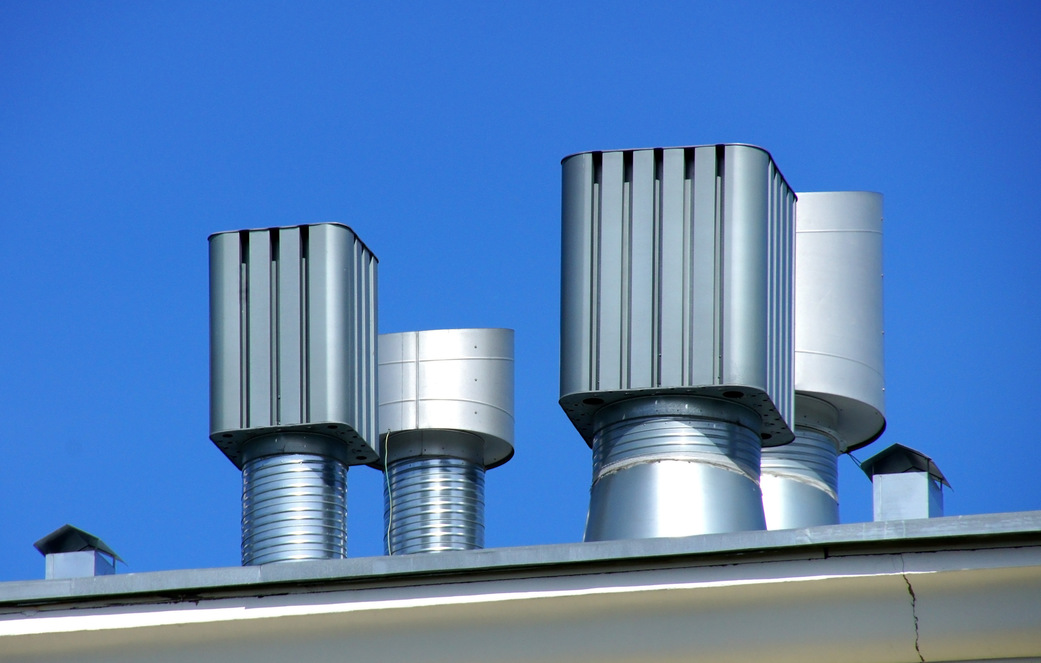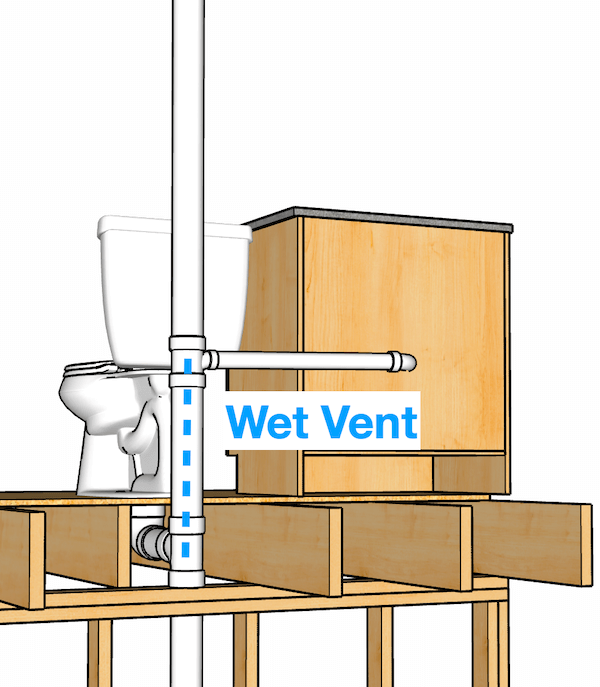Are you on the lookout for suggestions around The Upsides of Proper Ventilation in Plumbing Design?

Appropriate ventilation in plumbing systems is typically forgotten, yet it is vital for maintaining the capability and safety and security of your home's plumbing. Air flow aids regulate air pressure, protect against the accumulation of harmful gases, and make sure the reliable elimination of waste. In this overview, we will explore the importance of appropriate pipes air flow, exactly how it functions, and the benefits it gives your pipes system.
Recognizing Air Flow in Pipes
Ventilation in pipes refers to the network of pipelines that enable air to stream with the water drainage system. These vents offer numerous functions, consisting of regulating atmospheric pressure within the pipelines, protecting against sewage system gases from going into the home, and helping in the smooth flow of wastewater.
Just How Ventilation Works in Pipes Equipments
Air Pressure Regulation
Appropriate ventilation keeps balanced atmospheric pressure within the plumbing system. When water moves with pipelines, it displaces air. Without sufficient air flow, this displacement can develop negative stress, resulting in slow drains pipes or siphoning of water from catches, which can cause undesirable smells to leak right into the home.
Protecting Against Drain Gas Accumulation
One of one of the most vital features of plumbing vents is to stop sewage system gases, such as methane and hydrogen sulfide, from collecting within the home. These gases can posture severe health risks and are highly combustible. Vent pipes permit these gases to leave safely outside.
Assisting in Waste Elimination
Air flow assists in the efficient removal of wastewater by avoiding airlocks in the drain system. When air can stream easily with the vents, it enables water and waste to stream smoothly through the pipelines, lowering the danger of clogs and back-ups.
Kinds Of Pipes Vents
Main Heap Vent
The major stack air vent, also called the vent pile, is the primary air vent in a pipes system. It prolongs from the major drain align through the roofing, allowing gases to get away and fresh air to get in the system.
Branch Vent
Branch vents attach to the main pile vent and serve private fixtures, such as sinks, toilets, and showers. These vents make sure that each component has appropriate air flow to function effectively.
Air Admission Valve (AAV).
An Air Admittance Valve (AAV) is a one-way valve that allows air to get in the pipes system without the need for a conventional vent pipe prolonging through the roofing system. AAVs are frequently utilized in improvements or locations where setting up a typical air vent is not practical.
Signs of Poor Ventilation in Pipes.
Slow Draining Fixtures.
If your sinks, tubs, or toilets are draining pipes gradually, it could be an indicator of inadequate ventilation. Poor air flow can produce a vacuum cleaner impact, making it difficult for water to drain pipes correctly.
Gurgling Sounds.
Gurgling noises coming from drains pipes are frequently a result of air being drawn with water catches due to unfavorable stress in the pipes. This is a clear indication of insufficient air flow.
Undesirable Smells.
Sewer odors inside your home are a red flag that your pipes system is not correctly ventilated. This can mean that sewage system gases are not being effectively aired vent outside, leading to possibly harmful problems.
Typical Air Flow Blunders.
Poor Vent Sizing.
Making use of small air vent pipelines can result in bad air flow and stress inequalities in the system. It's important to use vents that meet the certain needs of your pipes system.
Improper Vent Positioning.
Placing vents also far from the components they offer can minimize their effectiveness. Correct placement guarantees that air can move freely and successfully through the system.
Disregarding Code Requirements.
Building ordinance supply specific guidelines for pipes ventilation. Neglecting these codes can result in a system that stops working to work correctly and may result in expensive repairs or health hazards.
Advantages of Appropriate Air Flow.
Improved System Performance.
Appropriately ventilated plumbing systems run extra efficiently, with fewer clogs, faster draining, and less strain on the pipes. This efficiency extends the life-span of the pipes system.
Improved Air Top Quality.
By protecting against sewage system gases from entering your home, correct ventilation contributes to better interior air high quality, making your living environment healthier and more comfy.
Stopping Water Damages.
Adequate air flow helps stop water from being siphoned out of catches, which can result in sewage system gases entering the home and causing water damage gradually.
Actions to Make Certain Proper Ventilation.
Consulting Pipes Codes.
Constantly seek advice from neighborhood pipes codes when designing or modifying your plumbing system. These codes provide the essential guidelines for appropriate airing vent and guarantee your system meets security requirements.
Normal Inspection and Maintenance.
Normal evaluations can help determine potential ventilation problems before they come to be significant issues. Upkeep tasks, such as cleansing vent pipelines and looking for obstructions, are crucial for maintaining the system in good working order.
Expert Setup.
For new setups or major modifications, it's important to work with an expert plumbing professional. They have the proficiency to make certain the ventilation system is appropriately developed and mounted according to code.
Final thought.
Correct ventilation is an important component of any kind of plumbing system, making sure that it functions efficiently and securely. By understanding the value of ventilation, identifying the indications of poor ventilation, and taking actions to maintain your system, you can stop costly issues and protect your home's air high quality.
Understanding the Role of Your Plumbing Vents in the Drainage System
The plumbing system in your home is more than just the kitchen sink, toilet, and bathroom. Some problems that arise within home plumbing are hard to detect because homeowners may not understand potential causes.
One part of the plumbing system that could cause you endless problems is the venting. The drain lines that run through your home and drain wastewater need proper venting to function properly. Faulty plumbing vents can lead to several problems that require the expertise of a plumber to check them out. Before finding experienced plumbing services, there are a few things to learn about plumbing vents.
Why vents are vital
Vents in the plumbing system lead to an outside area such as the roof or the back. The function of these vents is to keep sewer gases away from the drain pipes. They also establish seals in the drainage pipes that prevent the sucking back of waste gases into the home. Venting in the plumbing system also allows oxygen to get into the drainage system, which is an essential component in the breakdown of waste matter. The vents also ensure that the air pressure within the drainage system remains balanced, facilitating the flow of wastewater.
Possible problems
When the plumbing vents are problematic, one of the consequences is imbalanced water levels in the toilet. If you notice that the levels in the toilet bowl rise and fall all the time, then there may be something wrong with the vents.
Another issue is air bubble formation within the toilet. In most cases like these, the drain pipes are not receiving enough air. Lack of air pressure equalization is what leads to water flow problems. If you come across such issues in your home, make sure you call professional plumbers, such as the ones from Perfection Plumbing & Drain Cleaning Ltd.
Potential causes
Several scenarios can lead to some of the plumbing problems that homeowners suffer because of venting. One such scenario is the use of incorrectly sized vents. Usually, vents are the same size as the drain line to facilitate proper venting. Vents that are too small will lead to some plumbing issues. Another potential cause is fixtures that are not close enough to the vents. In this scenario, air forces itself through the traps of other fixtures, leading to gurgling sounds from toilets and sinks.
Most of these problems also happen with clogged vents. Tree leaves and debris can cause clogging when they make their way down a vent. Unclogging plumbing vents is a service that you can entrust to Saskatoon plumbers. They will know how to snake down vents and remove clogging stuck in fixtures.

As a fervent reader on What Is a Plumbing Vent and Why Is It Important, I assumed sharing that topic was a good thing. Sharing is nice. Helping others is fun. I cherish reading our article about What Is A Plumbing Vent & How Do They Work?.
Details